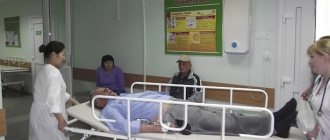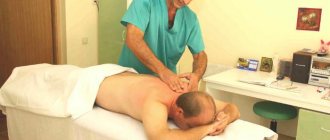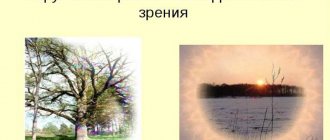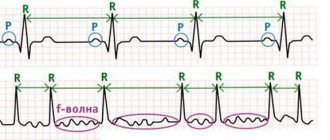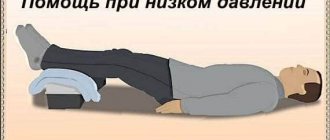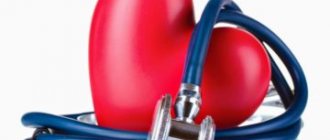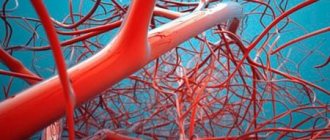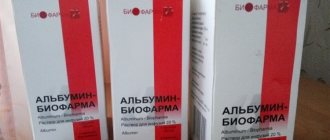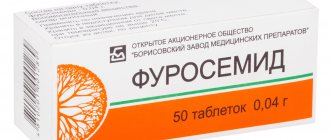Speech impairment due to stroke
Stroke can be hemorrhagic or ischemic.
With a hemorrhagic stroke, too much blood flows to the brain, and arteries may rupture, but with an ischemic stroke, on the contrary, not enough blood flows to the brain. Hemorrhagic stroke is less common, but causes more serious consequences for the patient. But in both cases, the areas of the brain responsible for speech may be damaged in a person.
If speech fails, then the disturbances occurred in the left hemisphere of the brain. With such a stroke, the right side is paralyzed and there is no speech.
Strokes with paralysis on the right side occur more often than on the left. And this is better for the patient, since in this case it is easier to make a diagnosis, since speech disorders are always manifested.
Such disorders are called aphasia. In this case, disturbances can occur in different parts of the brain. Depending on this, the consequences may be different. How to restore speech after an ischemic or hemorrhagic stroke?
Let's look at the types of aphasia and their consequences:
- Amnestic . A person can communicate, but periodically forgets the names of the objects he is talking about.
- Semantic . In this case, you need to talk to the patient exclusively in simple sentences; he simply will not understand complex ones.
- Sensory . A complex type of aphasia in which the patient does not understand speech at all. For him it comes down to a set of sounds. At the same time, he practically cannot understand the meaning of what was said.
- Motor . A person understands everything, but cannot say anything coherently, confuses sounds and words, or gets stuck on one sound combination.
- Total . The patient does not understand anything, does not recognize anyone, cannot say anything. Most often, this phase occurs immediately after a stroke. After some time, it can turn into motor.
Medical appointments
For reference. There is currently no medicine that can restore speech.
However, drug treatment is used to restore blood circulation, activate brain processes, relieve pain and convulsions:
- Nootropic drugs. Aimed at improving memory and activating thinking processes. Among them, Piracetam and Lucetam are especially noted.
- Sedatives. Drugs with such properties calm and relieve excess excitement. Tincture of valerian, motherwort, Persil is used.
- Medicines that improve blood supply. This group includes Cavinton, Cerebrolysin.
- Drugs aimed at normalizing the nutrition of brain tissue. Actovegin, Piracetam, Cortexin tablets are used.
- Anticonvulsant and relaxing. Lorezepam and Myokalm are prescribed. They help, among other things, reduce tension in the facial muscles.
- Hypotensive. Used to reduce blood pressure. Drugs of the sartan group, calcium antagonists, beta and alpha blockers are used. Diuretics reduce long-standing and reduce swelling.
- Anticoagulants reduce blood viscosity. Warfarin, Dipaxin, Tromexane are prescribed.
Stem cell therapy deserves special attention. This innovative technology is currently in testing and is not widely used. However, it has proven its effectiveness in restoring blood vessels, removing blood clots, cholesterol plaques, activating protective functions, and restoring speech.
The therapy is based on stem cell transplantation. It is carried out twice with a three-month break.
In addition to medications, disorders are treated with physical therapy.
Can speech be restored after a stroke and how quickly will this happen?
No one can give a 100% guarantee that the patient will be able to speak at all. But if you act quickly, correctly, follow all the recommendations of specialists, create an atmosphere of patience, love and care around a sick relative, support him as much as possible in his desire to recover, then he has a much better chance of quickly recovering his speech loss.
Simple speech problems can be solved in 2–6 months with special regular training and exercises. If the degree of violation is greater, then more time will be required.
Sometimes this can last up to several years. A forecast of 5-10 years is considered a period after which changes for the better are hardly possible. However, miracles of recovery happen, but they most often lie in the realm of intangible reality.
People say, “Houses and family walls heal.” This relates to the question of how relatives of a stroke patient should behave. The first questions they ask the doctor are: “Is speech restored after a stroke? Is it even possible to restore speech after a stroke? How long does it take for speech to be restored after a stroke? Relatives can be understood. But a lot depends on their behavior, on their actions.
Here are the usual recommendations from doctors to the patient’s relatives:
- The patient must feel that his family needs him, that he is valuable to her, that his relatives believe in him, love him, sincerely wish for his recovery and do not doubt it at all. In this case, he will have additional motivation to get back on his feet as quickly as possible. This means there will be energy for this.
- You need to constantly talk with the patient and in his presence. Then he will feel involved in the family. But the most important thing: if the topic is important to him, he will try to talk.
- It’s good if his favorite music, the songs he used to sing, are played in the house. The inner desire to sing along can well stimulate the awakening of his speech impulses.
- But it is better to remove excess noise, variety and volume of sounds so as not to overload the patient. You need to talk to him quietly, calmly, without explosive emotions. Surround him with your kindness. At the same time, there is no need to emphasize every time that he is terminally ill.
- Relatives need to have maximum patience, since they are the ones who must become constant assistants for the patient when performing the exercises that the speech therapist will show. And under no circumstances should you react with irritation if you can’t do the exercise.
What to do if a stroke causes loss of speech
How to regain speech after a stroke? Immediately after the first necessary assistance to the patient, it is important to contact a speech therapist.
Only this specialist will be able to correctly assess the degree of speech damage and draw up an effective set of measures for its restoration. The main task of such a complex is to restore speech breathing, voice, articulation, intonation, timbre.
How to restore speech after a stroke at home? You should not self-medicate in this case. Only after the exercises and massages shown by the speech therapist will it be possible to regularly perform them independently at home with the help of relatives.
Forecast
Unfortunately, few achieve full recovery after a stroke - only 20% of victims.
The rest acquire disabilities of varying degrees of severity, but in general the prognosis is rather comforting - modern medicine and physiotherapy have increased the patient’s chance of living a full life to the maximum.
If you start treatment as early as possible, you will be able to achieve incredible results - the human brain, even in this state, is capable of regeneration.
Speech therapy exercises to restore speech after a stroke at home
Let us now consider what methods a specialist can offer to restore a patient’s speech, and how they should be applied.
Articulation and breathing exercises
First, the person is asked to simply breathe, then, as he exhales, pronounce certain consonant sounds, one sound per exhalation. After this, while exhaling, all these sounds are pronounced in a row. There are no more than four of them. Sounds can be pronounced while exhaling, also with the chin raised.
Articulation gymnastics after a stroke
It includes exercises for the tongue, lips, voice, and facial muscles.
Exercises for the tongue and soft palate
- Stick your tongue out of your mouth and hold it there for a few seconds.
- Pull it down again and bend it up, hold it for a while.
- Pull it down and direct it first to the right corner of the mouth, then to the left.
- Move the tip of your tongue back and forth across the roof of your mouth.
- Direct your tongue to the right and left cheek.
- Click your tongue, first once, then twice, then three.
- Relax your tongue and, moving it back and forth, lightly bite with your teeth.
- Lick your lips first in one direction, then in the other.
Lip exercises
- Move your lips forward.
- Make a smile with your mouth closed.
- Bare your teeth and raise your upper lip, hold this for a couple of seconds.
- Puff out your cheeks and pump the air from side to side, rolling the air around your mouth.
- Relax your lips and blow through the gap in them.
Voice exercises
Speech gymnastics is performed for ischemic or hemorrhagic stroke.
- We pronounce all the vowel sounds separately, first long, then short, while exhaling. After this, as you exhale, we pronounce all the sounds in a row.
- We say the sound Y only articulatory, without sound, and feel the tension under the chin.
- We pronounce all the vowel sounds in a row, flowing into one another, alternately emphasizing different sounds.
- We pronounce consonant sounds, first unvoiced, separately, then one after another on one exhalation. After this, we pronounce voiced sounds in the same way. We add consonant sounds with vowels into certain syllables, while alternating paired unvoiced and voiced consonants.
All combinations of sounds, their permutations and combinations are determined by the speech therapist.
Tongue twister exercises after a stroke
First, we ask the patient to finish the tongue twister he knows, gradually increasing the number of words he says. If possible, we bring the exercise to perfection.
Exercises for facial muscles
- Raise your eyebrows, lower them, frown, relax.
- Open your mouth wide, try to stretch it, then relax it.
- Smile without opening your mouth.
- Inflate and deflate your cheeks.
- Pull your lips out as if for a kiss.
- Extend your tongue as far as possible in different directions from your mouth.
- Move your lower jaw carefully, first to the left, then to the right, then in a circle.
Speech therapy massage after stroke
After completing a set of exercises, it is necessary to apply a facial massage to each area of the face.
It is important that massage movements are selected only by a specialist. Some areas of the face will need to be relaxed, while others will need to be toned. If you approach this on your own, you can cause irreparable harm.
In addition to massaging the facial muscles directly, they massage the tongue, lips, inner surface of the cheeks, ears, scalp, and hands. All this relieves muscle stiffness and thus liberates speech.
Dysarthria
Dysarthria is a speech disorder that is caused by peripheral or bilateral paralysis of the muscles of the speech motor apparatus, damage to the striopallidal system, and damage to the cerebellum.
With a speech disorder such as dysarthria, the phrases pronounced by patients are correctly constructed, their vocabulary is not impaired, but they do not pronounce the words clearly. Sounds such as “r” and “l” or hissing are especially difficult to pronounce. Speech is not clear and blurred. Such patients complain of a feeling of “porridge in the mouth.” Also, in such patients there is a change in intonation, a violation of the tempo and rhythm of speech.
Pseudobulbar dysarthria —
This type of speech impairment appears with bilateral damage to the corticonuclear pathways, and as a result, paralysis of the muscles that are innervated by the hypoglossal, vagus and glossopharyngeal nerves.
Pseudobulbar dysarthria is usually divided into three degrees. According to the level of severity and speech damage.
1) Mild degree of dysarthria. It is characterized by the absence of gross speech impairments. Articulation problems involve slow and imprecise movements of the tongue and lips.
Patients with such a speech disorder are characterized by some blurring when pronouncing the sounds “zh” “sh” “r” “ts” “ch”; voiced sounds are pronounced with insufficient participation of the voice. Also, soft sounds are difficult to pronounce.
2) Average degree of dysarthria. The most numerous. This degree is characterized by amicity, limited tongue movements, a sedentary soft palate, a nasal-tinged voice, excessive salivation, and impaired swallowing and chewing. Speech is slurred, quiet, blurred. Children usually have late speech development (about 5-6 years).
3) Severe degree of dysarthria. Anarthria. It is characterized by deep muscle damage and complete inactivity of the speech apparatus. The face of such patients is mask-like, the mouth is always slightly open, the lower jaw is drooping. Speech is completely absent, although sometimes they can make inarticulate sounds.
Bulbar dysarthria —
This speech disorder occurs due to paralysis or paresis of the muscles that are involved in articulation. This type of dysarthria is often accompanied by a swallowing disorder.
Cerebellar dysarthria-
appears when the cerebellum or its pathways are damaged. This type of dysarthria is characterized by protracted speech, with impaired modulation and inconsistent volume.
Extrapyramidal dysarthria
(hyperkinetic dysarthria, subcortical dysarthria) occurs when subcortical nodes and nerve connections are damaged. In such patients, speech is slurred, nasal, speech tempo, prosody, and intonation-melodic structure are impaired.
Parkinsonian-
This type of dysarthria is observed in parkinsonism; it is characterized by slow, inexpressive speech, and voice modulation is impaired.
Erased form of dysarthria —
with this form of dysarthria, the pronunciation of whistling and hissing sounds is impaired, similar to lateral sigmatism.
Cold dysarthria —
this form of dysarthria manifests itself in myasthenic syndrome. Manifests itself as difficulty articulating when the ambient temperature drops.
Extrapyramidal dysarthria-
This type of dysarthria is caused by damage to the striapallidal system.
Features of the doctor’s work with the patient
- The main task of all specialist actions is to disinhibit speech. And for this they use all the capabilities of the patient that he has at the moment. Exercises should not tire the patient. They start with simple elements and last 10-15 minutes. Afterwards the program becomes more complicated and the lesson time increases.
- You need to talk to the patient calmly and slowly so that he understands the speech. If he cannot say anything, then we ask him to nod in response, showing that he understands.
- If the patient has difficulty speaking, you should ask him to make any onomatopoeia that he can make. If he can only pronounce one syllable, then you should choose words that begin with this syllable and let him try to finish them gradually.
- The same is with proverbs and sayings, names of famous films. You need to start a phrase and ask the patient to complete it, either with a word or with a syllable, as best he can. All the words that we usually pronounce automatically should be offered to him to say. These could be days of the week, months, a regular count to ten.
- It’s good to include cards with pictures in your work. You can ask simple questions: “What is this? What is he doing? What is he like? At the same time, it is important to move in these tasks gradually. The nouns are called first. After a while, when this stage has been completed, verbs are added, and only then adjectives.
- Gradually, rehabilitation activities include drawing and writing exercises. First, the person is asked to simply insert the missing letters in the word, then copy the entire word. The tasks gradually become more difficult.
- Exercises based on questions asked to the patient will be good. First, simple questions are asked with an option to answer “yes” or “no.” Afterwards, the questions are complicated so that the question itself contains a monosyllabic answer. And this word is what the patient should say as an answer.
Other methods of speech restoration after a stroke
Music therapy
It often happens that a person who has had a stroke has difficulty speaking, but can sing. Then all speech therapy exercises with sounds, syllables, and words are performed like a song.
Facial reflexology.
Biologically active points on the face are affected in a certain way.
Stem cell treatment.
By introducing such cells into the affected tissues, their integrity can be restored.
Acupuncture.
This method is used mainly for motor aphasia. In this way, a person’s speech activity is corrected.

